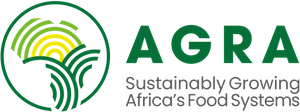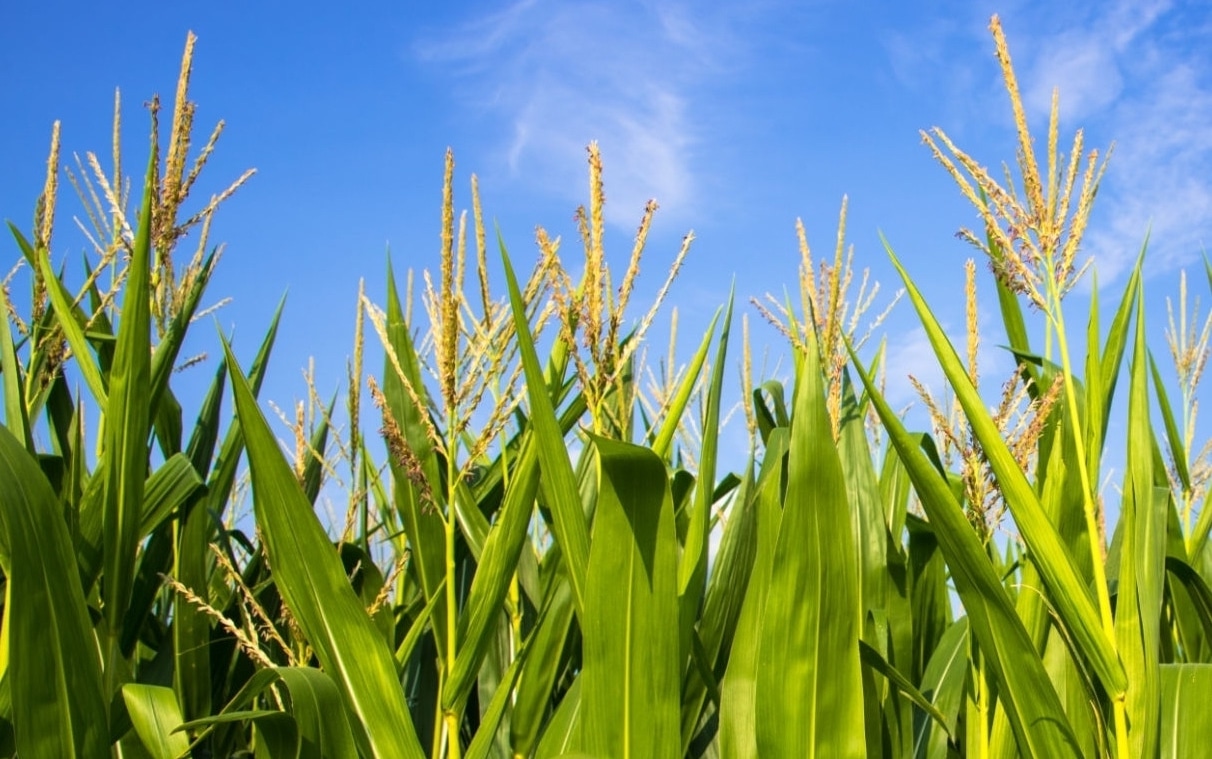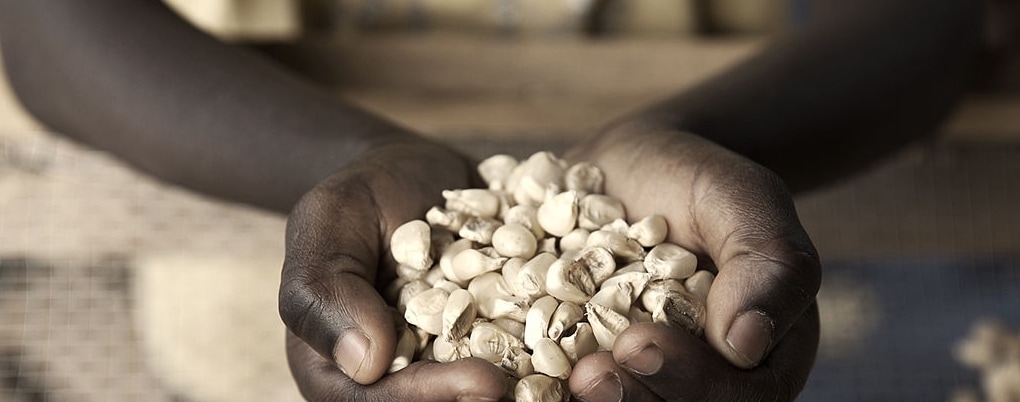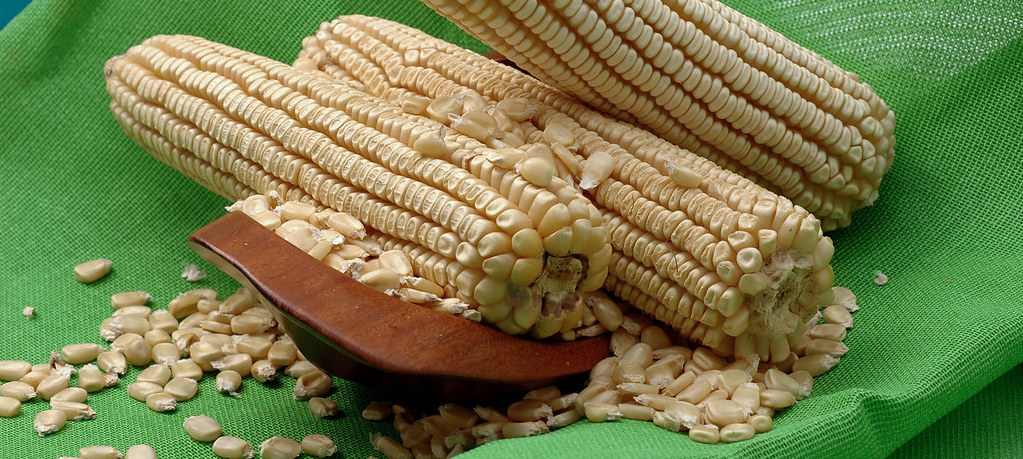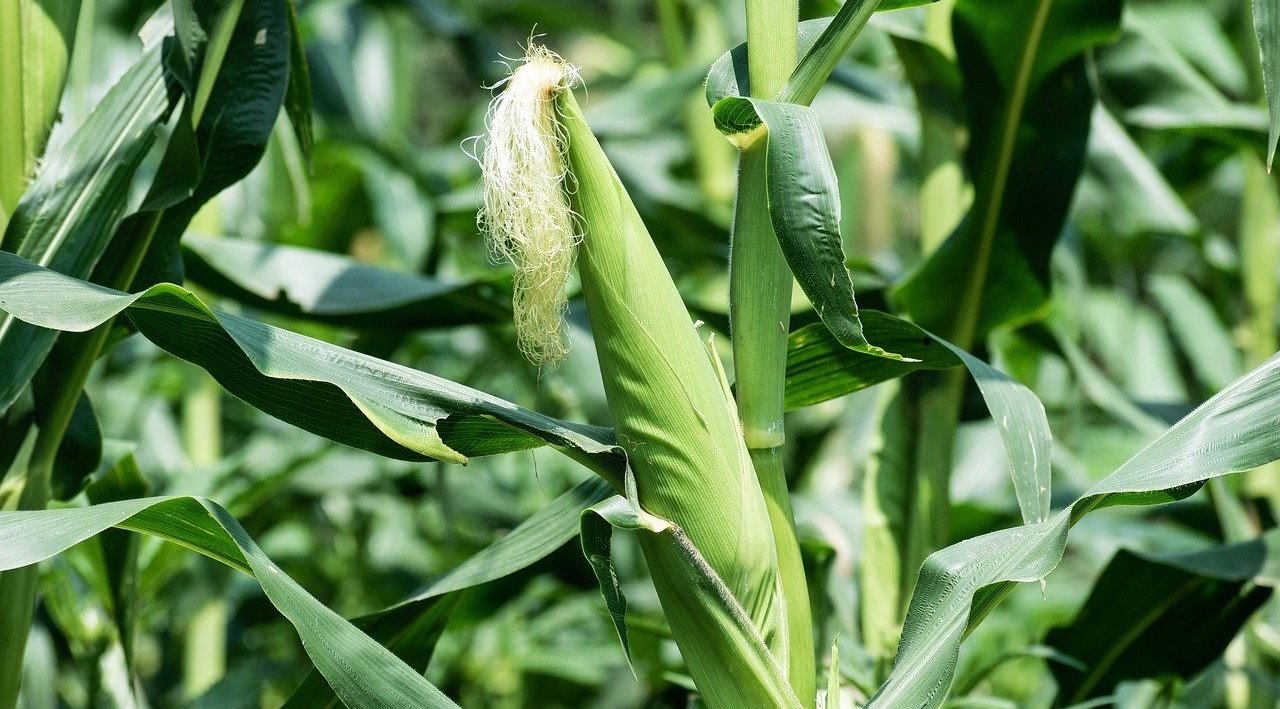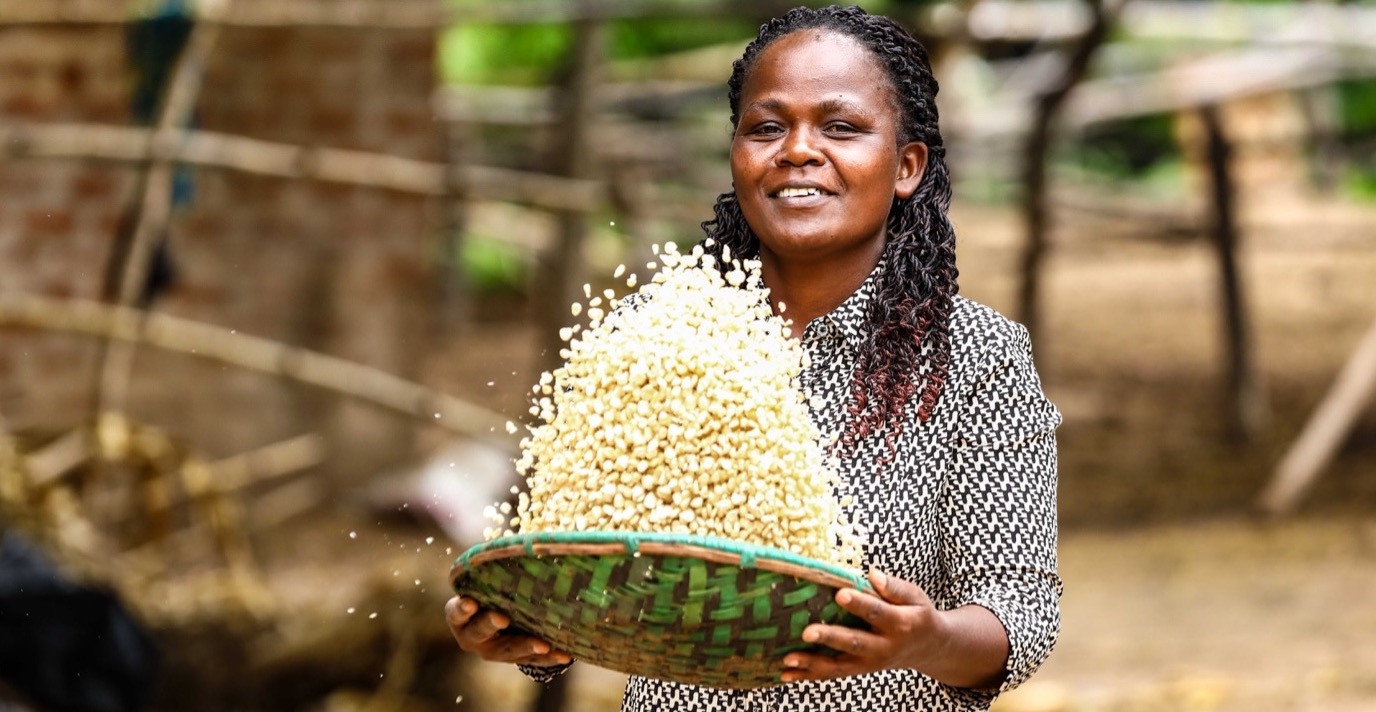Dwarfed by the towering maize crop in her one-acre farm in Kagumori village, Manyatta region in Embu County, Catherine Wanja takes a moment to inspect the climbing beans coiled tightly around the maize stalks. The crops are nearing maturity and the 32-year-old mother of one anticipates a bumper harvest of maize and beans at the end of the season.
However, not too long ago, Wanja had been counting her losses from poor farming practices. Stuck with at most, three bags of maize and a bag of beans, there was little else to look forward to. “I was in a difficult situation, and unable to commercialize production,” she recalls.
However, her fortunes changed when she received an invitation to participate in the AGRA-funded Regenerative Agriculture Project implemented by Farm Africa. She was one among 133 village-based advisors (VBAs) trained to provide extension support to farmers in their villages. The training included good agricultural practices such as boosting soil fertility through the use of manure, mulching, intercropping, crop rotation and agroforestry to support the production of maize, beans and other pulses.
“From the training I realized I had been applying manure that had not decomposed properly, which explained why I was not reaping the benefits,” she reminisces. “Although I practiced crop rotation, it was with crops of the same family, making the effort a futile one.” A soil test further revealed that the soil on her farm was acidic, for which she was advised on the appropriate fertilizer application as well as lime.
Another component of the training was business training that focused on the diversification of production as well as identifying other income generating opportunities along the value chain.
The VBAs were linked to input suppliers such as seed and fertilizer companies, effectively bringing these essential commodities closer to the farmers. These arrangements earned Wanja commissions after selling inputs to farmers. “I made Ksh 4,000. – during the last planting season from the sale of maize seed,” she explains. Additionally, she earned Ksh 6,000. – from selling Gliricidia sepium seedlings, a beneficial leguminous tree that fixes nitrogen to the soil and increases soil organic matter.
“I am in charge of 100 farmers in my area, where we have organized 10 training sessions on regenerative agriculture,” she adds. “Using my networks with input suppliers, I also plan to establish an agrovet shop to make quality inputs accessible to farmers in my area.”
Wanja mobilizes the farmers through a digital technology called AGRAbot installed in her phone. The application gives her leeway to send out invitations for trainings through bulk messages. She also checks weather information which she shares with farmers, as well as information on seed varieties best suited to the region.
The next step was to set up ‘baby’ demonstration plots on an area of land measuring 5-by-5 meters to compare the effects of applying the various treatments such as manure, fertilizer and mulching in the production of maize and climbing beans. In Mach 2021, Wanja established a ‘mother’ demonstration plot measuring 10-by-10 meters, putting her newly acquired knowledge on regenerative agriculture to good use to train more farmers.

